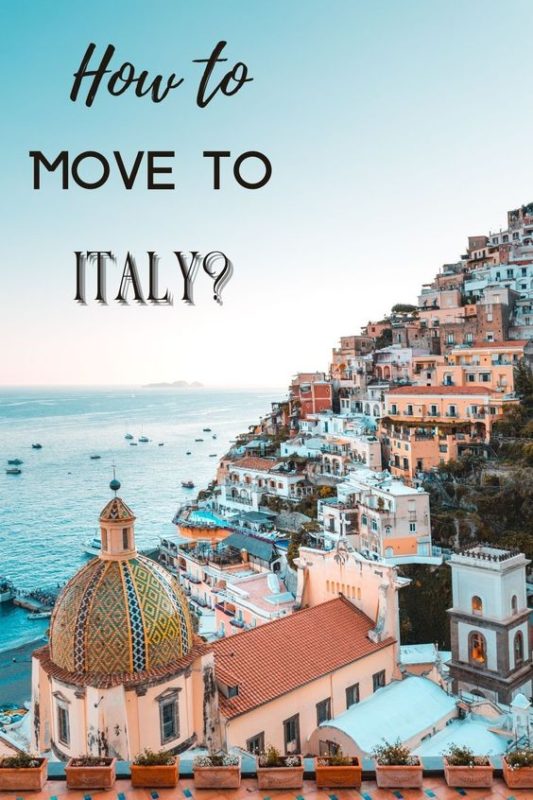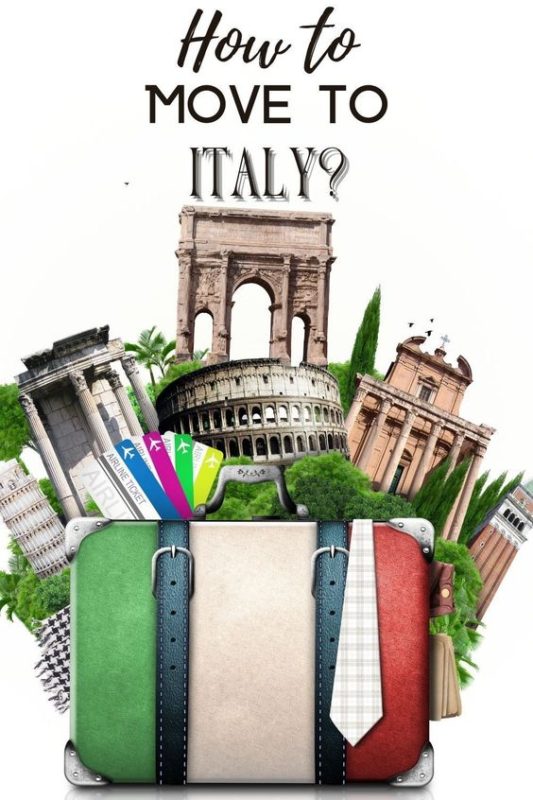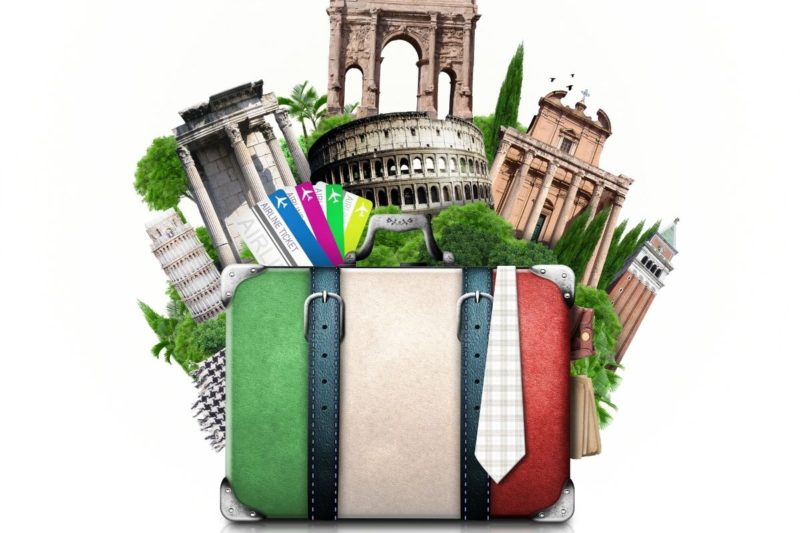How to move to Italy, orhHow to move to Italy from USA? How to get paid to move to Italy? So many questions! If you asked yourself “Can I move to Italy”? Or which is the city in Italy paying you to move there, you’re in the right place! Find out the ultimate 20 things to know if you want to understand how to move to Italy permanently! Tips coming from somebody who was been through all this, and moved to Italy in 2020.
Are you asking how to move to Italy? It’s a dream of thousands and thousands of people all around the world. Italy is full of wonderful places, amazing people, and great food. Not to mention the wine, the great weather, and the many beautiful landscapes and seasides. Who wouldn’t want to move to Italy in a colorful town, or a historic city, and live surrounded by art, colors, and the best food from the whole world? Heaven of pasta, pizza, gelato, art, colors, wine, and sea.
It’s been my biggest dream since 2015 to once move and settle down in Italy. If you’re interested in how to move to Italy permanently, you’ll find the answers in this post for that too. You can read my other post with a review on all the things I’ll be listing here, so you can understand that things aren’t that easy if you want to move to Italy as you may think!
15 things to know about moving to Italy – How to move to Italy?
Right, so I’m not going to lie to you, it’s not easy at all to move and settle down in Italy. If you’re asking now how to move to Italy? How to move to Italy from the USA? Or maybe you’re asking yourself Can I move to Italy while considering the beauty of the country and imagining the Dolce Vita? Are you looking for answers on how to move to Italy permanently?
Well, the Italian Dolce Vita is not that dolce if you are unable to adjust. And no matter where you’re coming from, you will need to make dozens of adjustments to settle down and fit in. For starters, if you’re an impatient person, you better start working on your patience, or you’ll go crazy before the first 3 months. The Italian slow living lifestyle is something that everyone must learn who moves here. Okay, except if you’re planning to live completely isolated, or to have a small group of friends who are also from abroad. If you actually want to blend into your new life in Italy, There are a few things to know! So, how to move to Italy, the right way?
1. North or South of Italy?
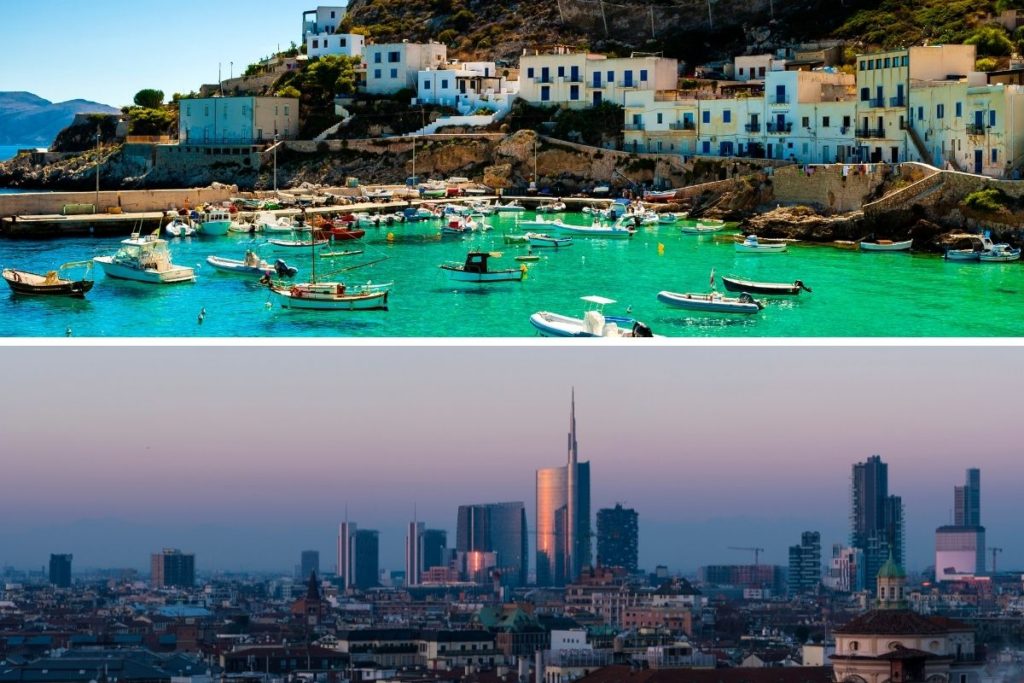
The most important question you need to ask yourself! Even if it seems unbelievable, the North and South of Italy are very, very different. Before I moved here, I knew about this, but when I actually lived here I got to understand how big the difference is. Basically, people from the North think about those from the South that they are noisy, grotesque in some angles, lazy, and dirty. While those from the South say, that people in Northern Italy are super cold, they don’t know how to have fun and enjoy life, they are ruder and well, basically zombies who don’t understand the concept of the dolce vita because they do nothing just work.
This is definitely the rawest way I’ve shared what I hear day after day, and it’s obviously exaggerated and rude. What you need to know is that the South of Italy is full of life, noisier, indeed, but warmer, colorful, fun. People are more open and friendly in general. Well, what would you expect from a place where it’s warm all the time?
Instead, North is a bit more firm, chilled, silent, and indeed, I’ve never met so many workaholics in any part of Italy such as I’m meeting since I live in the region of Emilia-Romagna. Here, working, have a great job, having even a weekend bartender job beside a full-time one is something normal. The expectations are always about studies and work, and that’s what people concentrate on. Not a surprise why Milan is the financial capital of the country, right?
So, are you a full-time party animal who loves the sun and the amazing weather, being surrounded by many friendly people? Do you love spending all your time on the beach, doing nothing – dolce far niente? Or you’re the type of person who’s more introverted, who loves building a career and making the weekends count by a great trip to the seaside, or a hike in the mountains? Going for elegance and simplicity instead of noise and colors? It’s easy, just think through what type of person you are, and then decide where to move to Italy, if it should be the North or South of Italy?
2. Know the costs of living
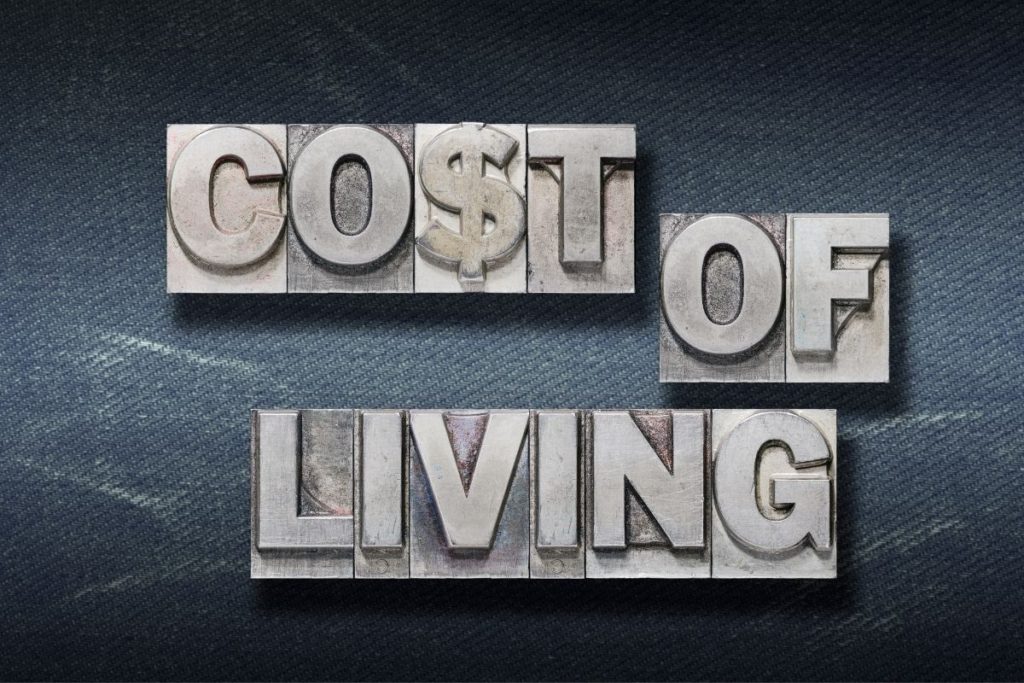
Depending if you’re picking the north or south of the country, obviously the north is more expensive. However, as everywhere, there’s a big difference between villages, towns and big cities. Obviously, city life is always the most expensive. To live in Rome or Milan, and to live an averagely good life, you need to earn at least €2000/month. At least! In big cities, such as Milan or Rome, the cost of a 1 bedroom apartment is above €700. Also, Milan is much more expensive than Rome!
In Italian towns, the price of a 1 bedroom apartment is around €500, and in villages, you can already find nice ones for €300-€350 even. Top this cost up to monthly food-drink cost, that more or less the same as in other countries. As I’m not eating much, including grocery shopping, the nights out, dinners, and lunch in town, I spend on food and drinks a total of €200-€250/month. Obviously, if there’s a dinner in a high-standard restaurant, you already spent €50-€70 just for a night, just for one person.
Other costs… Keeping it to the smallest apartment, gas and electricity are usually €120-€150/month. This, with a big house obviously will be much higher. Internet, wifi in the house, depending what deal you find, it’s usually around €25-€30/month. Plus, there are other costs as well. All in all, the minimum you need to earn in Italy, to make a living and have food is at least €1200. But that’s already taking you to the lower edge, where you can’t afford many things to do after you paid the rent and other costs.
3. Pick the Location
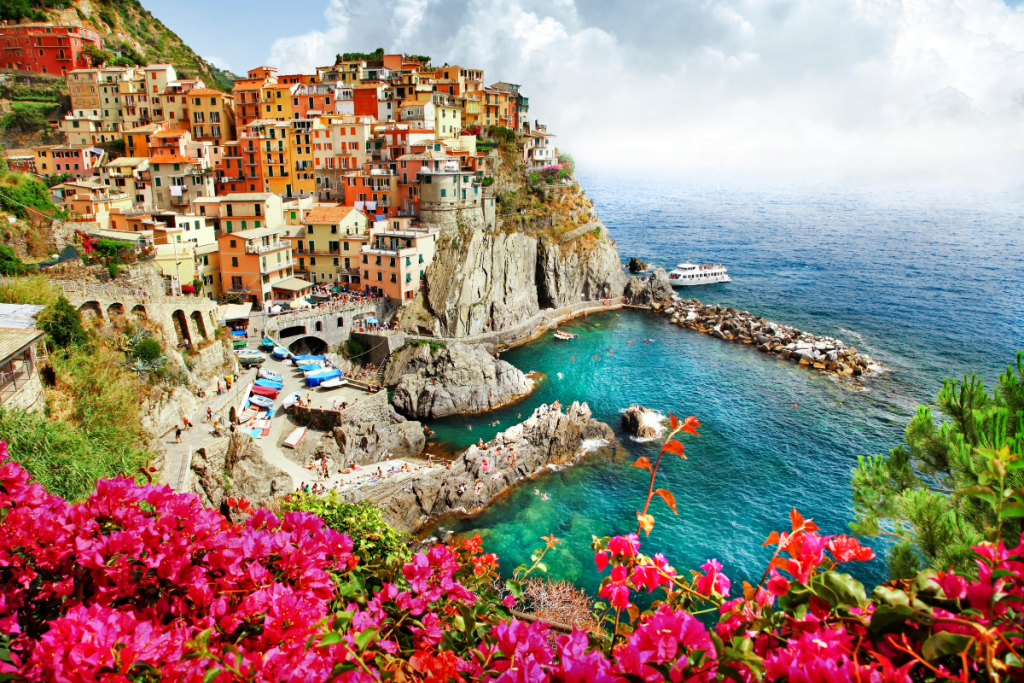
Depending on if you’re the person of the South or North of Italy, and your budget, the next step on how to move to Italy is to pick a location.
Do you want to live in a big city, where you can meet other foreigners easily? Do you want to live in a town, closer to a big city? Or do you want a really quiet village instead and blend in with the rural life in Italy? For many years, I’ve been dreaming of moving to Rome. I can’t thank myself enough that I gave up on this, because I, as a personality, fit in the best to the Emilia Romagna region. It was the perfect region for my expectations and my personality. I did consider Milan as well, but then I realized that all I want is a normal town, with low tourism and peace. So, after analyzing myself very well, I decided to move to a strategic town, that’s close to Milan, but to other sides of Italy as well. It’s cheaper, peaceful, and sometimes boring, but it’s exactly what I needed.
The beauty about picking a location to live in Italy is, that the towns and provinces, even regions differ so much from each other, that every type of personality can find the right place for themselves. The diversity of the country gives you the possibility for this.
4. Renting or buying?
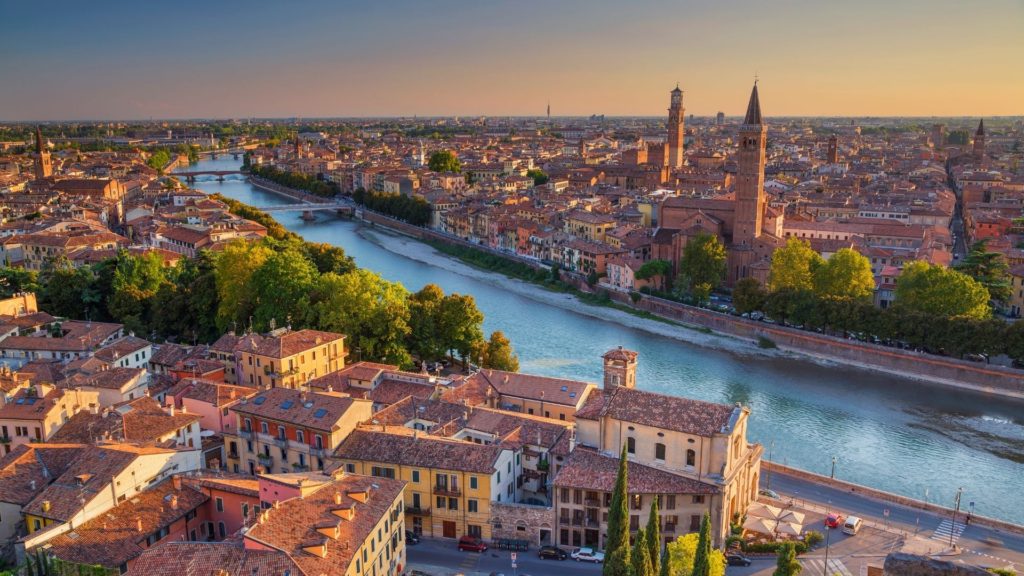
The next important step if you’re planning to move to Italy is to know if you want to rent or to buy a house? Now, the prices vary a lot depending on the location. An easy example is, that the price of a 1-bedroom apartment in Milan covers the prices of two or even three apartments in a smaller town 30 minutes away. Prices de really varies also from North to South. Obviously, northern Italy is more expensive than the south. An apartment or house is also more expensive in a city or a town than in a village.
If you’re planning to rent an apartment, the price for a decent 1 bedroom apartment in the big cities in Italy is around EUR 750.00. This in a smaller city for example in the region of Emilia Romagna costs you about EUR 500, while in a small town, or a village you can get it for even EUR 250. If you go down south, these prices will also be lower.
You can find apartments cheaper in Rome than in Milan, but if you go souther, it will cost even less. Obviously, not in the Amalfi Coast! In each case, buying or renting, never trust just anyone. Look for websites like idealista.it, or immobiliari.it and also look for who published the house. If it’s a private owner, never pay anything in advance, and never pay anything without receipt and contract! Real Estate agencies are always the most trustworthy, though you always have to pay a percentage to them.
5. House or Apartment?
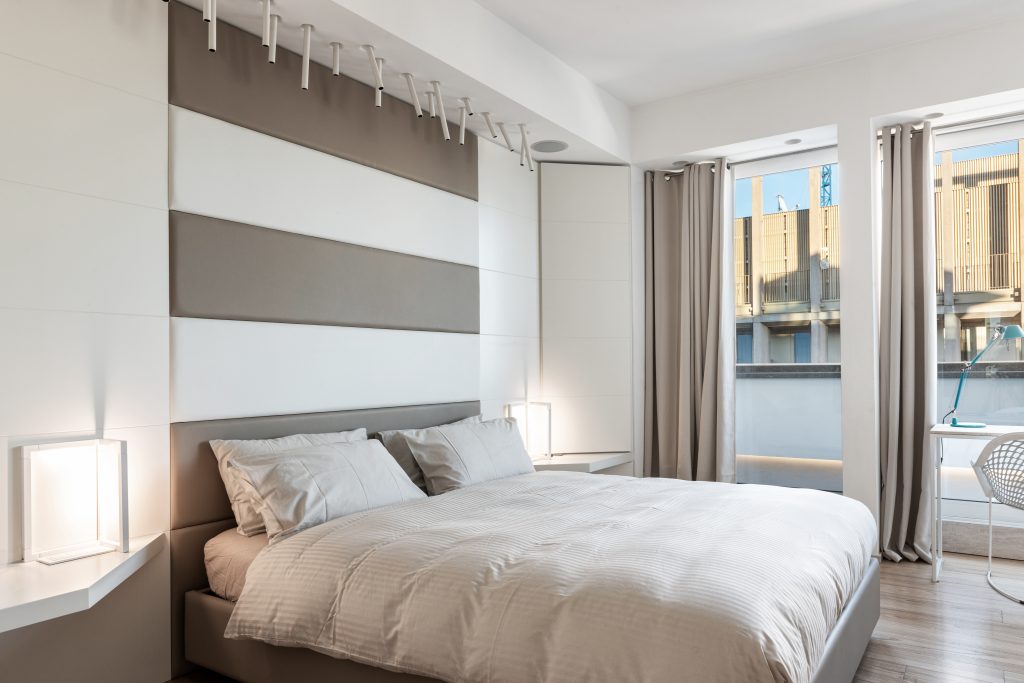
Now, decide if you want to buy a house or apartment is easier to decide if you already know whether you want to move to a city, town, or village. If you’re moving into a town or a city, houses can be really messy to keep everything in order, if you’re living alone, or even with family. We all know that there are many things to do around a house, continuously.
So buying a house in Italy must be thought through well. For those looking to get paid to move to Italy, there are different programs where you can either buy a house super cheaply, or you get paid to move to a specific place. These are usually villages where the elder population is too high, and the youth is gone. It’s a great program and a great opportunity who wants to change their environment to a sunny, Italian one.
Apartments are usually easy to find in cities and towns, and especially young people, expats, singles, or young couples even prefer getting an apartment first and think about a house just later on. In each case, the above-mentioned websites are great places to look up announcements for houses and apartments, if you’ve been asking how to move to Italy!
6. Language barrier
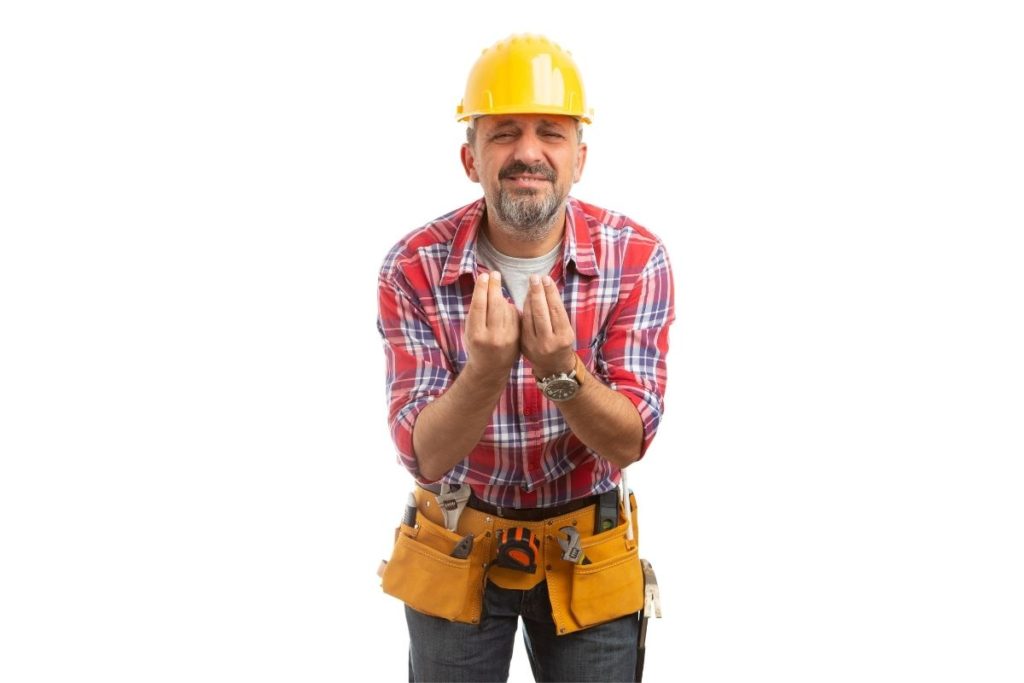
For those asking how to move to Italy from USA, here’s something I must highlight. Not just for those who are planning to move to Italy from the USA, but for anyone who wants to move to Italy. The language barrier can be a real challenge. In big cities, you can find plenty of people to speak English, even when you want to sort out papers. However, in smaller towns, or villages, well, that will be a big issue.
When I moved here, I spoke Italian, but not fluently. Finding an apartment was easy, but getting all the information from the agent was pretty hard, since she didn’t speak English, and we basically misunderstood each other in an important matter. I’ve asked if the gas and electricity are included in the rent, since in the UK in most of the places where I lived, it was. She said yes, but it turned out that actually the water was included, and the gas and electricity weren’t. So in January, you can imagine what a surprise it was to wake up that I have no gas and no heating in the house…
However, the language barrier can actually make you become an outsider. It doesn’t just make it difficult to sort out legal stuff or find a job if you need to find one, but you’ll never be accepted in the society where you live if you don’t speak Italian. You can become someone who will be seen forever as an outsider, even in the smallest village where you know everyone. So I do recommend learning Italian, and not just the basics before you move to Italy!
7. The first things you need to do: Codice Fiscale
And we’ve arrived at the bureaucracy! If you’re wondering what you need to do and how to move to Italy, your very first step MUST be to get an appointment at Agenzia dell’Entrate to get your Codice Fiscale or Permesso di Soggiorno. I’ll shortly explain what is the difference between these two, but first the appointment. You can now book appointments in most towns and cities online (finally) so you don’t have to wait in line for 5 hours.
Codice Fiscale is a code, that everyone has to have in Italy or you can’t do absolutely anything. When I say anything, I mean you can’t even rent an apartment since the code is needed for your contract. In some places, you can’t do online purchases either without this code. It’s the same type of code that in the United Kingdom we know as NI number.
Permesso di Soggiorno is for those who are not moving from the European Union. For this as well as for the Codice Fiscale you need the same document: ID, Passport, but you also need to have your visa to present. In each case, when you get the Permesso di Soggiorno you must get the Codice Fiscale with it. Then, once you’ve got your Codice Fiscale, you can start thinking about the next steps.
8. Looking for houses

Now, we’ve spoken about deciding where to move in Italy, and if you want to buy or rent a house, as well as if you want a house or apartment. Now the next step comes, which might be a bit weird for some, especially for those asking how to move to Italy from the USA. You can contact the agencies in the messaging section, but you must know, that if you do that, you might never get an answer.
The best way to reach out to people in Italy, and to get things actually sorted is always to call. You must call the agency if you want to get answers. I’ve tried contacting different agencies in the messaging box on idealista.it for about 10 different houses. Out of these, I’ve got back 2 answers after a follow-up, and none of them worked out. At that time, I thought it’s easier (and logically thinking, it actually would be) if I see houses before I move to Italy, I contact the agencies in messages, and I set up a few meetings for when I arrive. That didn’t work at all, and actually, I almost got scammed.
When I arrived at the town where I live now, I called the number of the agencies which were dealing with the apartments I was interested in, and they answered straight away and gave me an appointment right away for the same day. Super easy, just a phone call.
Remember also, that the standard house contract in Italy is 4 years. You can end the contract sooner with a pre-notice you agree on with the owner though. Also, remember to get the labels at the intercom, mailbox, and at your door (if applicable) changed. If you receive any packs or mails and your name isn’t changed, the postman won’t give you your pack.
9. Business concept in Italy

Some of you are searching for how to get paid to move to Italy, and I’d like to highlight it here, that there are plenty of programs, in 2021 the newest one is up north in Piedmonte. You can apply to these programs where they usually got a specific budget, you get to buy a house for almost nothing, get it renovated with the fundings, and move to these specific towns or villages.
It’s an amazing program, and it’s really great for those especially those who work remotely, online, or in any way that they don’t have to be attached to a specific place. However, when it comes to entrepreneurs, you must know that while there are more and more entrepreneurs in Italy, and more and more of those who are from another country, if you’ll need to collaborate and do business with locals, that has a specific way too.
I found doing business in Italy very charming. It’s something elegant, professional, but also enjoyable. Business meetings most often happen over a coffee, az Aperitivo, a lunch, or a dinner. Business is discussed in person and Italians seem to really dislike email pitches or online communication. So if you’re an introverted entrepreneur moving to Italy, you must learn to let go and be social if you want to win in business.
10. If you’re employed/self-employed
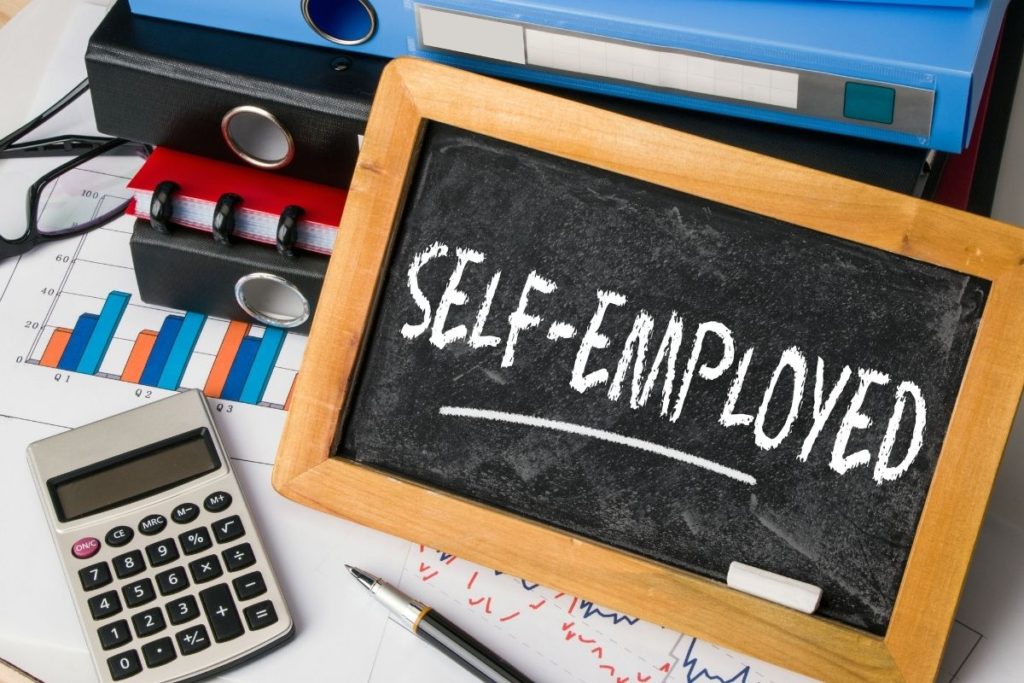
Here comes to juicy part if you want to sort out legal stuff and work! How to move to Italy if you’ve already found a job, or you’re looking for a job is easy. Or well, less stressful, but not easy. If you already have a job waiting for you in Italy, that’s amazing, and as soon as you’ve got your contract, you’re ready to do the next steps right away. If you’re hunting for jobs, well, depending on what your profession is, what’s your language level, and how persistent you are, but you can find a job there. Then, once you’ve got your contract, you can do the next steps in the list.
However, if you’re self-employed, you move to Italy to live as a freelancer, or you have savings and you’re going to start your online business, blog, or whatever you’re interested in after you moved here, things might get a bit complicated, and you will need a lot of patience! First of all, if you’ve got your Codice Fiscale and you rented an apartment, you have to remember that in Italy the bureaucracy seems difficult, but actually, there are a few steps you have to follow to sort out things. On this, you’ll find more information below at the partita IVA.
In each case, employed of self-employed, to be able to get other things sorted out that you will need for a normal life, you must have either a work contract, 6.000 euros on your account, or have the partita IVA (self-employment registration). Otherwise, don’t even dream about calling for an appointment to get your Residenza.
11. Residenza – You can’t do anything without this

The most struggle with the paperwork I had at this point, the Residenza. This is basically documentation for the Comune (town management) to confirm your residence at a specific address. Without having your Residenza confirmed, you can’t get health insurance, buy internet, open a bank account, or do basically anything that involves the state. During the pandemic, this was a big issue for those who didn’t have their residence confirmed, since they couldn’t get an appointment for a long time to get the vaccine for example.
I started my business after moving to Italy, from scratch and I was barely earning enough to live, while I also used all my savings. So, when I called to get an appointment, besides the dozens of documents that have to be filled out, I learned, that I need either a work contract, the Partita IVA (self-employed registration) or to have 6.000 euros in my bank account. Well, I didn’t have any. So my Residenza took to be confirmed about 5 months, while in the meantime I didn’t get to get an Italian bank account or to buy Wifi in my apartment…
Once I’ve got my self-employment registration, things started to work out fast. First, the Residenza these days can be sorted out in the email as well. You have to contact the specific department of the Comune, and you can send over online your documents too. Then, when they finally confirm that they started reviewing your request, you have to wait about 45 days to be able to do anything else. No ID card making for example!
12. ID Card and Tessera Sanitaria

The next step in the bureaucracy that you can do is the ID card and the Tessera Sanitaria. For all of you asking how to move to Italy, just remember one thing: the Italian bureaucracy is like the Domino game. If one piece is missing, you can’t continue with the next step. Each step has to be done. First, Codice Fiscale, then the house, work contract/registration for self-employment, and then the Residenza.
Once you’re arriving at the end of the 45 days of the Residenza review, you can get an appointment to do your ID card. You can also call the Comune to ask if everything is fine with the Residenza before you call for an appointment at the ID card, or you might present yourself and be sent home. (It happened to me).
Getting an ID card is an easy process. You need to bring pictures (but it’s better to call or email them and ask since they ask for pictures just since the pandemic). Then, you need to take with you documents like passport, Codice Fiscale, the letter from the Comune for your Residenza, and work contract or the partita IVA document. They sort out everything else, you pay around EUR 20 and get your ID card shipped to your home address. In the meantime, they will issue you a temporary ID card which you can use to do the Tessera Sanitaria (Health Card).
Getting the Tessera Sanitaria in most towns doesn’t need an appointment, but it’s also better to double-check. Call or email the ASL (Azienda Sanitaria Locale) so local healthcare company. If you don’t need an appointment, make sure to take with you all the documents that you’ve got: CF, Residenza, partita IVA or work contract, and the temporary (or normal) ID card, the Permesso di Soggiorno (if you have one), and passport. They will get it done for you quickly, and you’ll receive the card within a few days.
13. Bank Account

The next piece in the Domino game is opening a bank account in Italy. Once you’ve got all the documents that I have listed multiple times above, and your Tessera Sanitaria arrived, you can finally open a bank account in Italy.
Depending if you’re self-employed or employed, you can open different types of bank account. But first, you have to look up well what bank you choose. I personally don’t trust small banks, and I like to do big research in each country before I open a bank account. Also, for me, the Intesa San Paolo is what worked out the best. It was recommended by a friend of mine who I trust the most when it comes to money and Italy, and I didn’t get let down. – So far. –
Also, for those who are self-employed, freelancers, or anything similar, you can also open a personal account that gets attached to your Partita IVA, and this way, you don’t have to open a business account until it’s not necessary.
14. Purchasing internet

And now, that all the pieces of domino for the Italian bureaucracy were placed in the right place, we can speak about the internet! In big cities, buying internet and having it activated can take as little as 3 days, but in towns, especially if the neighbors use other companies than what you want to use it might take ages.
I personally went with Vodafone. I don’t know about you, but in every country I lived so far, everything about my phone or Wifi was from Vodafone. I trust them the most. However, they did really piss me off with the Wifi process. Basically, I ordered my modem and the internet package at the end of June, and they came and activate it in September. I’ve called multiple times, pissed off, but they just kept saying the same excuses.
Anyhow it wasn’t so important to now cancel my order and send the modem back (which arrived 2 days after placing the order), and also in August nobody is working in Italy, so I waited until it became necessary. In September though, as soon as they started to work again normally, they got it sorted out quickly.
Now if you have to choose your internet provider, there are many options beyond Vodafone, and the prices range between EUR 25-35/month. At Vodafone, I’m paying EUR 25, and since they activated it, I never had issues anymore with the company or the Wifi.
15. Life in Italy
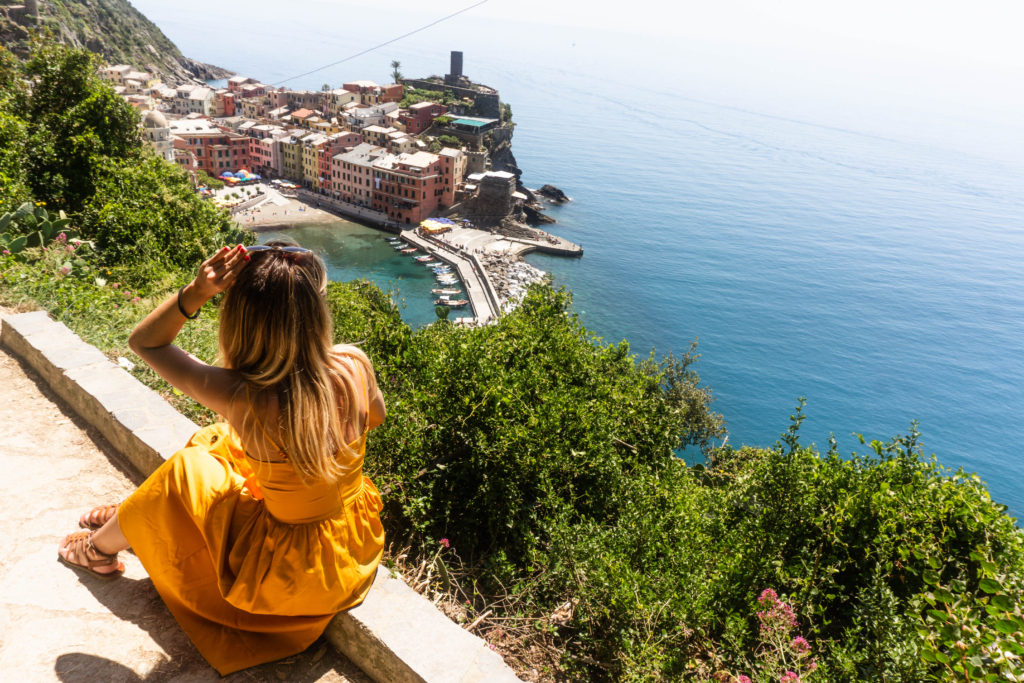
It feels scary to move to Italy after the above points? It’s not as scary as it seems, believe me! For those asking how to move to Italy from USA, but for anyone who wants to move to Italy, I have just one thing to say!
Moving to Italy was the biggest dream of my life since I first stepped foot on its lands in 2015. It took me 5 years to actually move, but the biggest dream became also the best decision I have ever made! In Italy, I found myself, my voice, my strength, the most amazing friends, and I get to see the most beautiful places every single time I step out of the house.
Nowhere is perfect, and life has many challenges. Some of the biggest challenges in my life came after I moved here, but it has been the most perfect 1.5 years ever, and I can’t wait for more! Living in Italy, becoming part of your community, becoming part of the life of your town or city, doing business, traveling, and eating in Italy… I mean, I wish I could’ve to move sooner.
16. The concept of piano, piano

Woohoo, we love this one! I mean, I love this one, but my mother for example is going crazy. We all heard about the Italian slow-food, that comes from the Italian slow-living lifestyle. It can’t be practiced everywhere obviously, like in Milan is much harder to do slow-living than in a small town, however, it has many perks.
If you’re asking how to move to Italy and be happy there, you must practice patience and acceptance. You must accept that people are not rushing, things aren’t getting sorted in 5 minutes, and a relationship won’t escalate from the first kiss to marriage in 1 year. In Italy, we do everything slowly. We enjoy what we do, we stay in the moment, and we don’t stress on the next steps all the time.
Slow living lifestyle
We enjoy the food, a swim, a ride, or a hike. We enjoy spending time with friends, quality time… Also, we enjoy cooking together, organizing dinners, or spending a whole day with a group of 30 friends. We see the beautiful flowers we pass nearby, and we stop after the first bite of pasta to appreciate how good it’s tasting. Piano, piano means slowly, slowly, but actually, it means step by step too. And the concept of step by step is matching actually more.
I never thought that life can be so beautiful if you just slow down a bit. I never had time to enjoy anything around me because I was always running, and I never actually stayed present in the moment before I learned this. Also in business… Before everything was a mess and things didn’t get done or got rushed through because I wanted to do it all, and do it fast. Now, I’ve got my to-do list, and I split my things in a way that it makes me feel good. If I’m not in the mood to do something today, I do it tomorrow and instead, today I do something that I’m in the mood for. And this feels just great. No wonder why Italians live so long when they practicing this lifestyle. Even my previously existing wrinkles dissapeared.
17. If you’re self-employed and need a Partita IVA
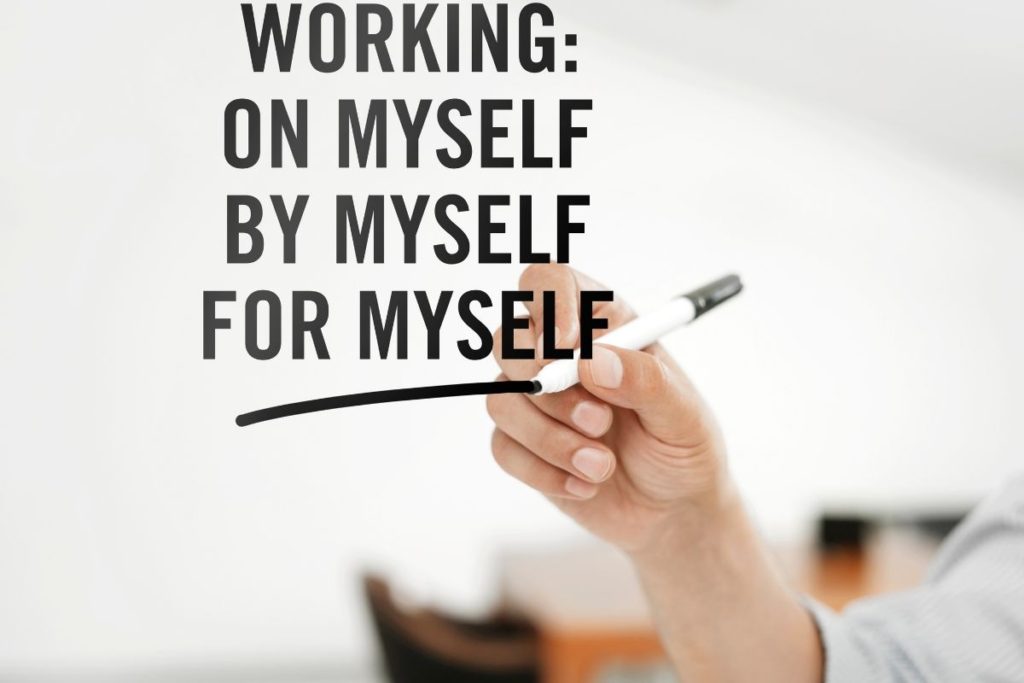
So we’re back to the Partita IVA! In the UK it is super easy to be self-employed. You can register yourself online, you can do your own accounting, and you don’t have to overthink and overdo anything. Sorry to break it to you, but this isn’t the case in Italy!
If you’re self-employed, expat, a freelancer, and anything like these, you must open your partita IVA. Not just because without it you can’t get Residenza, ID Card, Tessera Sanitaria, and all the other things that I’ve listed above, but also because if you’re caught not paying taxes it will turn out bad.
Legally, you also can’t live in Italy for more than 6 months and having yourself registered in another country. If you do that, after the first 6 months you should be paying partial taxes to Italy and partial to the country where you’re resident. The best thing is if you’re planning for a long stay in Italy to get your Partita IVA open and you don’t have to stress anymore.
Now, because of the bureaucracy, you can’t really open a partita IVA without having an accountant. Everybody has an accountant. I have an accountant too. Alone I wouldn’t ever figure out even the documents that I had to fill to open the partita IVA. For a smaller business, the accountants cost around EUR 500/year. It’s not cheap, but they will sort out everything for you. They register you, help to choose your codice di attivita, which is the code for what field you’re working in, and you have to send them your invoices, and they sort the rest. It’s easy, and simple this way.
So what you need to do is to find an accountant. If you know people where you move that’s always better to ask for recommendations, but you can also look them up online and try to find the best for you. Then, you just get an appointment and everything else will be discussed there.
18. Blending in – How to live like a local in Italy?

I’ve written some articles already about this topic since it’s not easy to fully adapt to a new culture in a new country, but it’s doable and it has the best results. You start learning how locals do things, how they dress, how they act, what are their interests. Slowly, as you start meeting people, speaking the language, you will get to meet more and more people to be friends with.
If there’s one thing that’s easy in Italy is to find friends. Especially because Italians love hanging out in groups. If one person takes you out with a group of friends, you’ve already met at least 10 people in one night. And here, everybody speaks with everybody, and people will come to chat and get to know who you are. All you need to do is to become a little bit Italian, and SPEAK the language!
19. New traditions

How to move to Italy from USA or other countries and what to expect after you’ve already spent some time in Italy? You will definitely want to start cooking first of all. You will start doing your own homemade pasta, and you will have at least one pot of basils in your house.
If you have Italian friends, you will start taking the 15th of August seriously and have a barbecue day in the name of Ferragosto, and you might start planning all your trips for August. Also, you might wait for Easter because on Easter Monday, when it’s Pasquetta you’d be having a gathering with family and friends in the nearby hills for a picnic or a barbeque.
You will possibly stop drinking Cappuccino in the morning, and you will definitely change your English breakfast to a Briosche with cream or chocolate. Or, you will stop drinking Aperol Spritz for dinner or after dinner, and you will drink it just at Aperitivo time. One of the best is, that you will stop saying to meet people at 2 p.m. or 7 p.m. or 9 p.m and instead you will ask to meet at lunchtime, Aperitivo time, dinner time, or after dinner time.
And I could continue this list… If you blend in with a new culture, you will start having new traditions. And when it comes to traditions, the Italian traditions and habits are absolutely amazing to add to your life.
20. Openness is the key – if you don’t want to live isolated
For some, Italians are too open, to friendly, and too warm. For others, this is exactly what they found attractive in them, and their lifestyle. I can’t describe in a few words how much I have changed since I live in Italy. But the always grumpy, always thinking about just myself, and always passive person suddenly became a friendly, social, caring person who’s enjoying life, and everything inside of it.
Thinking about just myself doesn’t mean that I was selfish, or I didn’t care about people. It means that before I moved to Italy, I spoke with max 1 of my friends on daily basis, and this now escalated to 5-10. I’m always keeping in touch with people, that for me, an introverted person is very strange. Before, I didn’t actually care what others did that day or that week, but with people here, we actually want to be there and present in each others’ lives.
It’s strange, and I’m still adjusting. But all the positivity, care, and love that I found here, I never found in any of the countries where I lived until now. Everyone is just dealing with their own stuff, and not paying attention as much to relationships as we do in Italy. It’s beautiful!
Wrapping up the 20 tips for how to move to Italy
You want to get paid to move to Italy or you’re moving because you fall in love with this country, it doesn’t matter. What matters is the value you bring to this country. And what value this country can give you. The above 20 tips are based on my experience, and all the hard things I went through to learn them in the first year of living here.
As I said, this was the best decision of my life, and I’m grateful every single morning, every single moment of the day when the thought passes my mind: I live in Italy!I The most beautiful things I have ever done for myself, and the most amazing chance I’ve ever got in life. Obviously, it’s not the same for everyone, but for me, it turned out beautifully so far!
I wanted to make sure that I highlight the steps on how to move to Italy a way that it will make it easier for you. Please read carefully twice if you need everything, especially the tips for legal documents, since it can really be a pain if you don’t pay attention, and there are important details that you should keep in mind!
Pin it: 20 tips for how to move to Italy
